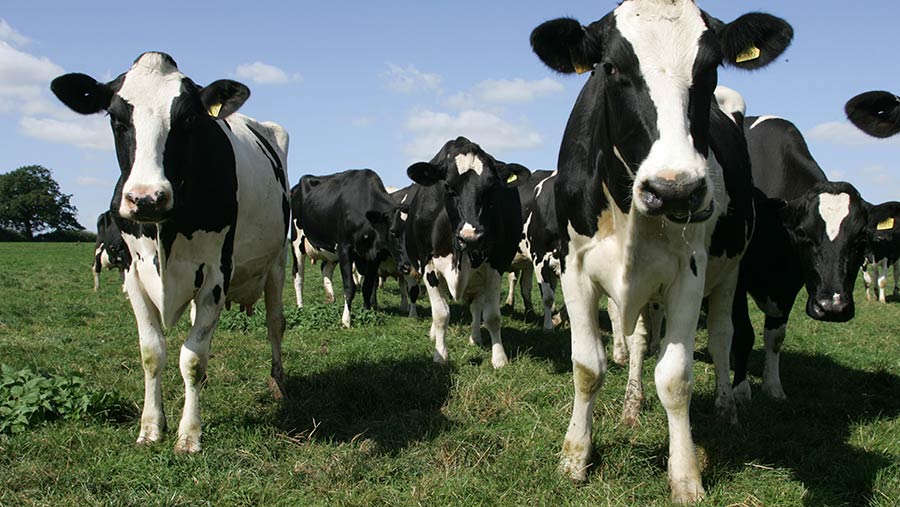UK dairy herd costings reveal jump in efficiency
 © Tim Scrivener
© Tim Scrivener Dairy herds costed by Kite Consulting achieved higher yields from static feed rates in the milk year to March 2020.
Kite’s latest Milk Monitor Dairy Herd Costings show milk production rose by 300 litres a cow over the 12-month period.
Milk solids also increased by 31kg a cow, yet there was no rise in feed use and feed costs fell by an average of £5/t.
See also: 3 simple adjustments to improve cow health and yield
Kite Consulting’s Chris Flint said the increased efficiency was due to a range of ongoing improvements being implemented by herd managers. These include:
- Improved forage quality in both grazing management and conserved forage
- Better ventilation in barns
- A focus on water availability and quality
- Increased attention to foot care and clamp management
- Better, more focused use of genetics
- Improved dry cow and transition management.
Improved financials
The higher efficiency is reflected in improved financial performance, Mr Flint said.
“Margin over purchased feed has risen by £65 a cow, despite a slightly lower milk price. This, with a small increase in herd size, added £34,913 to the herd margin.
“Cows are producing more milk from the same rate of inputs,” he suggested.
“We have seen feed rate remain static over the past seven years, while milk a cow has increased by 840 litres or 9.3%, showing efficiencies coming through,” Mr Flint added.
Top herds
Kite’s figures also highlighted the top 25% and top 10% of herds based on margin over purchased feed a cow (MOPF/cow).
These have continued to improve, achieving 11,734 litres and 12,441 litres respectively from a similar feed rate to the average at 0.35kg/litre.
Respectively, for the two upper groups, average solids yields were 877kg a cow and 924kg a cow a year, with MOPF/cow at £2,591 and £2,791.
“It’s clear that there is no one silver bullet when it comes to improving profitability on UK dairy farms, whatever their system.
Instead, farmers are seeing the benefit of making small changes and increasing attention to detail – things that don’t cost a huge amount, but collectively can have a sizeable impact on cow performance,” Mr Flint concluded.
Kite Consulting’s Milk Monitor Dairy Herd Costings (averages across all herds) |
|||
|
|
March 2020 |
March 2029 |
Difference |
|
Herd size |
349 |
343 |
6 |
|
Yield a cow (litres) |
9,867 |
9,585 |
282 |
|
Milk production/herd |
3.44m |
3.29m |
0.16m |
|
Milk solids (kg a cow) |
755 |
724 |
31 |
|
Price (p/litre) |
29.72 |
29.98 |
-0.26 |
|
Butterfat (%) |
4.07 |
4.01 |
0.06 |
|
Protein (%) |
3.36 |
3.32 |
0.04 |
|
Feed (kg/litre) |
0.35 |
0.35 |
– |
|
Feed cost (£/t) |
225 |
230 |
-5 |
|
Purchased feed cost/litre (p/litre) |
8.33 |
8.60 |
-0.27 |
|
MOPF/litre (p/litre) |
21.39 |
21.38 |
0.01 |
|
MOPF/cow (£) |
2,103 |
2,038 |
65 |
|
MOPF/herd (£) |
733,947 |
699,034 |
34,913 |
Kite’s costings explained
Milk Monitor data is collected from farms across the sector from a range of sizes and encompasses all different production systems, including grazing and non-grazing, block calving and all year round calving herds. These farms supply many different milk buyers and markets.
